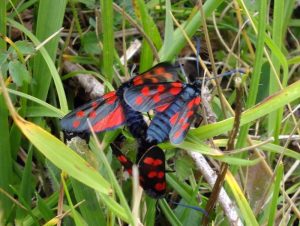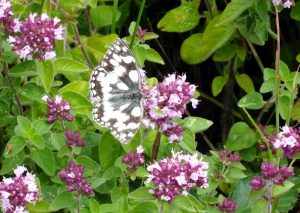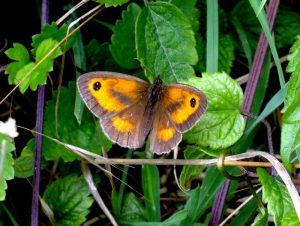On Tuesday 18th July members of Ferring Conservation Group, led by Clive Hope,Graham Tuppen and Jackie Hall, met at Cissbury Ring to take part in the Butterfly Conservation’s Big Butterfly Count.
It was a lovely sunny day, with only a gentle breeze, so the conditions were favourable and in all 19 varieties of butterflies, 3 of moths, with numbers of some species well into the 20s. The Group saw Large, Small and Marbled White, Brimstone, Small Copper, Meadow Brown, Gatekeeper, Painted Lady, Red Admiral, Common and Chalkhill Blue, Brown Argus, Speckled Wood, Peacock, Small Tortoiseshell, Wall Brown, Dark Green Fritillary, and Small and Essex Skipper Butterflies, and 6-Spot Burnet, Silver Y and Common Crimson and Gold Moths.
The wildflowers were many and varied, and birds spotted included Goldfinches, a Kestrel, Red Kite and a young Redstart.
Kestrel, Red Kite and a young Redstart.
The Group also saw the New Forest ponies that grazing freely playing an important part in restoring the iconic features of the landscape. The ponies eat away at dead grass and overgrowing shrubs which help to make space for wild flowers and allows wildlife to bloom.
Everyone agreed that the event was a delightful 2 hours of gentle exercise in a lovely setting with great company.
setting with great company.
(Photographs courtesy of Peter Dale)

